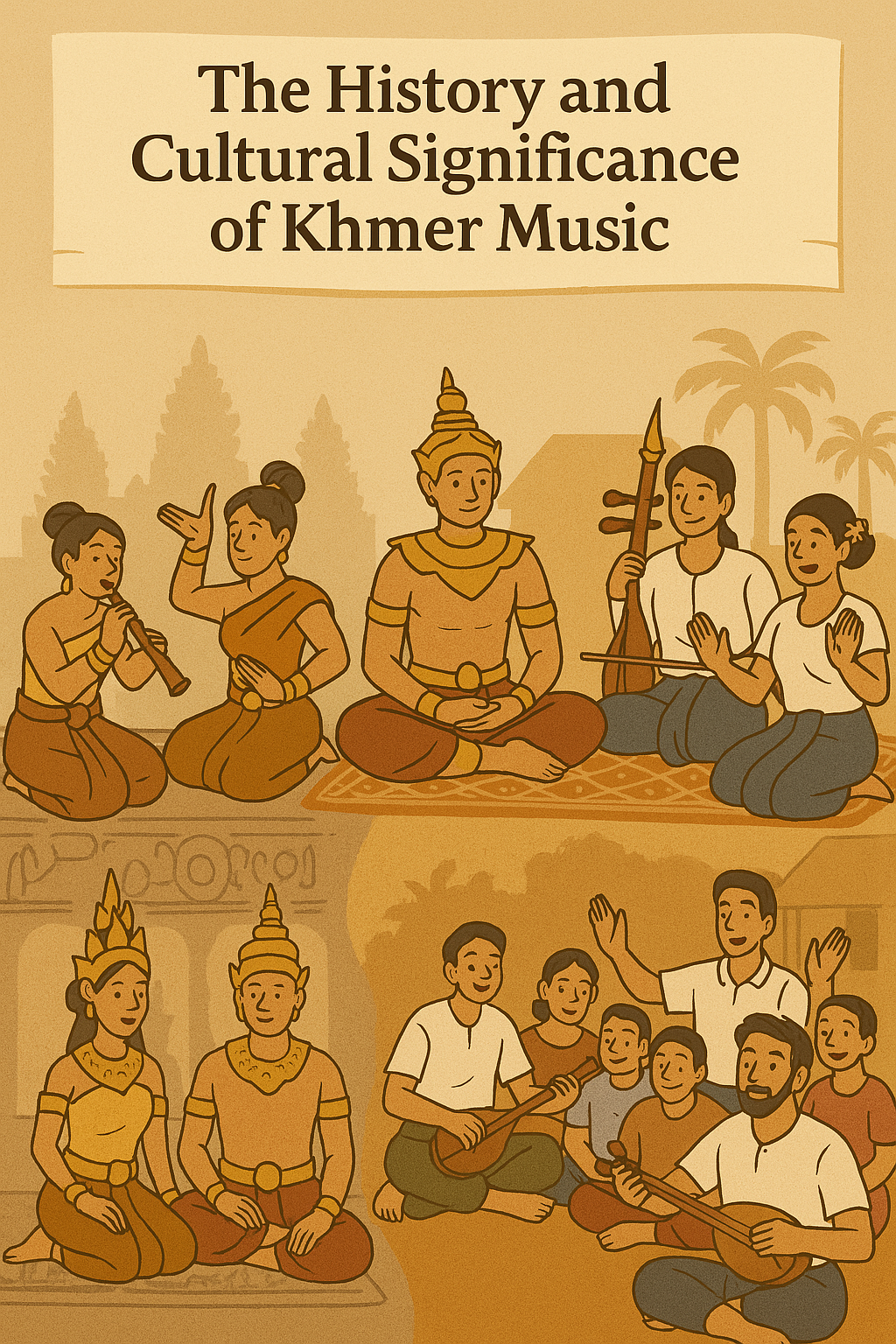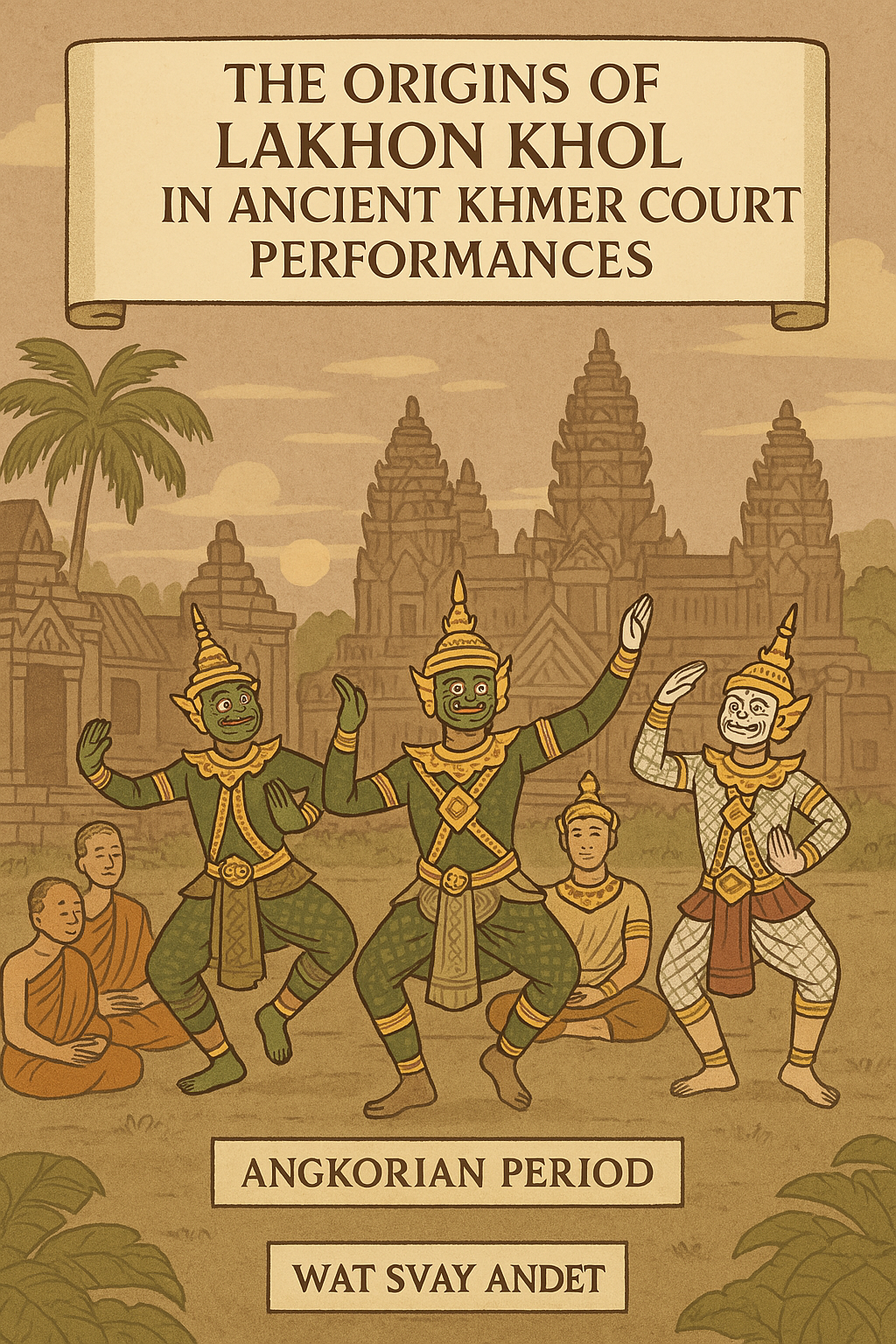Among Cambodia’s most soulful and intellectually rich musical traditions is the Chapei Dong Veng (ចាប៉ីដងវែង)—a long-necked lute paired with poetic improvisation, sharp wit, and cultural wisdom. Often performed solo, this genre of folk music serves not just to entertain but to educate, preserve oral history, and critique society. With roots deep in Khmer rural culture, the Chapei remains an icon of resilience and creativity.

1. What Makes Chapei Dong Veng Unique?
Chapei Dong Veng is more than just music—it’s a one-man performance of melody, satire, and storytelling. The performer plays a two-stringed lute called the chapei, while simultaneously singing verses in a rhythmic and often humorous poetic style.
What sets it apart:
- Solo performance style: Often with minimal accompaniment.
- Lyrical depth: Blends moral lessons, Buddhist philosophy, folk tales, and daily life.
- Improvisational wit: Requires quick thinking, deep cultural knowledge, and verbal agility.
- Audience interaction: Encourages laughter, reflection, and dialogue.
It’s the Khmer equivalent of a folk bard, philosopher, and comedian rolled into one.
2. The Legendary Chapei Master Kong Nay and His Influence
No figure embodies the spirit of Chapei more than Kong Nay (b. 1944)—a blind master whose deep voice, brilliant lyrics, and unshakable charisma earned him the nickname “The Ray Charles of Cambodia.”
Despite going blind at age four, Kong Nay mastered the chapei and became a national treasure, spreading wisdom through:
- Televised performances
- Live festivals
- Cultural diplomacy abroad
He preserved traditional verses, revived Buddhist chants, and added modern social topics to his repertoire—bridging past and present. His influence helped Chapei Dong Veng gain international recognition and inspired a new generation of artists.
3. How Chapei Dong Veng Was Used for Education and Storytelling
In rural Cambodia, before modern education was widespread, Chapei performances acted as a mobile school of life:
- Taught Buddhist precepts and karma-based ethics
- Shared historical narratives and royal legends
- Told folk tales with moral endings
- Offered satire on politics, social issues, and village gossip
Easily portable and performed at markets, weddings, pagodas, and community gatherings, the Chapei was a cultural classroom for the common people.
4. The Improvisation Techniques Used in Chapei Performances
One of the hallmarks of Chapei Dong Veng is improvisation, or kse sang, which requires:
- Quick rhyme formulation in verse form (pleung chbap, pleung arak)
- Deep knowledge of Khmer idioms, proverbs, and Buddhist teachings
- Audience awareness, adjusting tone and subject to fit the crowd
- Call-and-response flexibility with other performers or listeners
These techniques are not only artistic but intellectual—requiring the performer to entertain while educating, often on the spot.
5. The Revival of Chapei as an Intangible Cultural Heritage
The Chapei tradition nearly disappeared during the Khmer Rouge regime, which targeted intellectuals and artists. Many masters were lost.
However, since the early 2000s:
- Chapei Dong Veng has been revived through cultural organizations and pagoda schools.
- In 2016, it was inscribed by UNESCO on the List of Intangible Cultural Heritage in Need of Urgent Safeguarding.
- Kong Nay and his disciples began performing globally, bringing the art to new audiences.
This recognition not only preserves the art but re-establishes it as a pillar of Khmer identity.
6. Efforts to Teach the Younger Generation About Chapei
To ensure survival, modern institutions are training young Cambodians in both instrument mastery and poetic technique:
- Cambodian Living Arts and the Royal University of Fine Arts offer programs for Chapei study.
- Workshops in rural areas are reviving interest among youth.
- Artists like Kak Channthy (Cambodian Space Project) and modern performers are integrating Chapei into fusion genres.
Digital platforms now host Chapei videos, helping this ancient tradition thrive in the digital age—where the voice of wisdom continues to speak.
Conclusion: A Voice for the People, Past and Future
The Chapei Dong Veng is a symbol of Khmer intellect, humor, and resilience. Whether played under a starlit sky in a village or on an international stage, it remains a vibrant channel for truth, storytelling, and identity. As long as one voice carries a chapei and dares to sing, Cambodia’s cultural soul continues to speak—wise, witty, and wonderfully alive.





